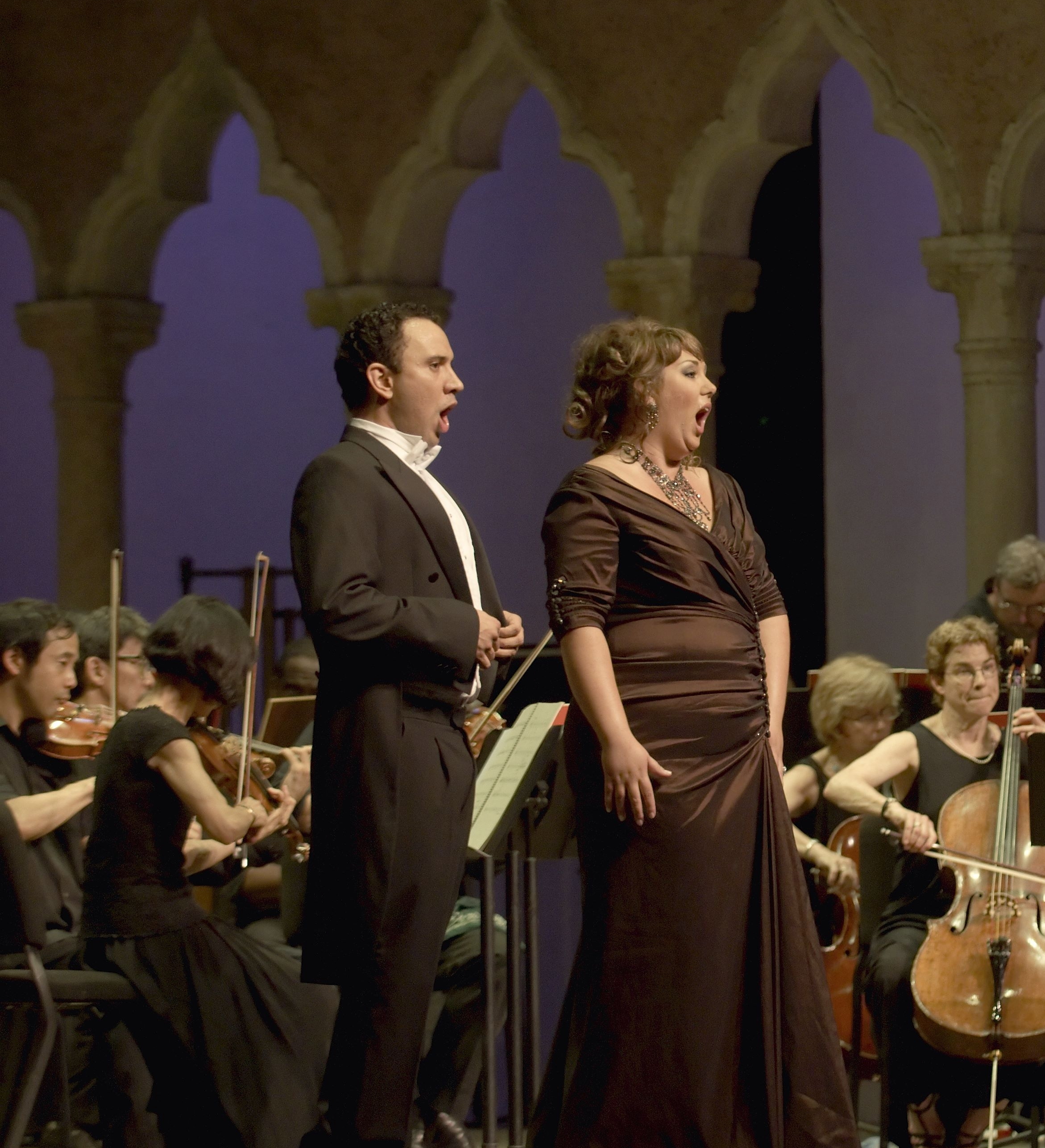At Caramoor, Donizetti’s “Maria di Rohan” unmasked as Verdi precursor

Luciano Bothelo and Jennifer Rowley in Caramoor's concert version of Donizetti's "Maria di Rohan" Saturday night.
Donizetti’s Maria di Rohan is the kind of work that 19th-century opera scholars can have a field day with. The rarely heard opera was written late in the composer’s career, when he was at the height of his powers. He reigned as Italy’s premiere opera composer–Verdi having only just burst on the scene with Nabucco–and was much sought after by leading opera houses. At this point, he divided his time primarily between Vienna and Paris, with trips back to Italy, especially Naples. All three cities saw an authentic version of Maria di Rohan—each of which has significant differences from the others—making for a wealth of choices for anyone seeking to perform it. Devotees of the so-called bel canto repertoire also know the opera as an important prima-donna vehicle, and they prize recordings by divas on the order of Virginia Zeani, Renata Scotto and Edita Gruberova.
In short, Maria di Rohan has long been a sitting duck for exhumation by the Caramoor International Music Festival’s Bel Canto at Caramoor series, whose vocally strong, musicologically scrupulous performances under Will Crutchfield’s direction make these Katonah concert presentations a summertime must for New York area operagoers.
The performance on Saturday evening in Caramoor’s Venetian Theatre gave ample evidence of why scholars have been drawn to Maria di Rohan. Perhaps most interesting, as Crutchfield pointed out in a program note, is the opera’s affinity to Verdi and especially Un ballo in maschera, an opera some 15 years in the future. Like Ballo it involves a soprano (Maria) who is married to a baritone (Duke of Chevreuse), plus a tenor (Count of Chalais) in love with the soprano, who reciprocates his love. Further, the tenor and baritone are closely allied in friendship and politics. (The setting is the French court during the time of Cardinal Richelieu.) And, just as with Ballo, the opera’s central piece is a love duet for soprano and tenor, in which the tenor, in an atmosphere of musical languor heightened by tremolo strings, revels in hearing the soprano sing the words T’amo. For this performance, which otherwise followed the version of the opera’s 1843 Vienna premiere, Crutchfield included the duet’s slow movement, which, according to him, Donizetti did not set in Vienna because he thought its adulterous text would not get past the censors there.
Maria di Rohan also has choice examples of Donizetti’s expressive use of the cabaletta. When Chevreuse learns of his wife’s adultery, anyone conditioned on early Verdi would expect him to launch into a blood-and-thunder cabaletta. Donizetti is more subtle. Chevreuse registers his shock in terse, declamatory phrases punctuated by pizzicato strings; only later does he burst into a full bodied tune. But the best music of the opera is the final duet for Maria and Chevreuse, which morphs into a trio, just as the best piece in several early Verdi operas is the final trio.
Still, one would be reluctant to call Maria di Rohan a forgotten masterpiece on the basis of Saturday’s one-night-only performance. The opera passed by quite quickly and seemed short on character development. A stronger cast, however, might very likely make an asset of the opera’s brevity. Replacing Takesha Meshé Kizart on short notice, Jennifer Rowley sang with a handsomely textured and richly resonant soprano. She had the role securely in hand, although her portrayal, perhaps understandably under the circumstances, was rather generalized and didn’t make Maria stand out fully as a character. Still, Maria’s prayer, Havvi un Dio, with English horn obbligato, was touchingly done.
The Brazilian tenor Luciano Botelho brought to Chalais a trim tenor of appealing quality. But the voice sounded at least one size too small for the role, and in the upper range Botelho’s tone tended to fade. Scott Bearden sang Chevreuse with a strong baritone and an aggressive manner that was especially suitable to the strong passions of Act 3. Another musical addition was the ballata that Donizetti composed for Paris when he rewrote the role of the courtier Gondì for mezzo. Vanessa Cariddi sang it vividly. Leading the Orchestra of St. Luke’s, Crutchfield demonstrated that he is a fine singers’ conductor while giving the opera a firm rhythmic underpinning.